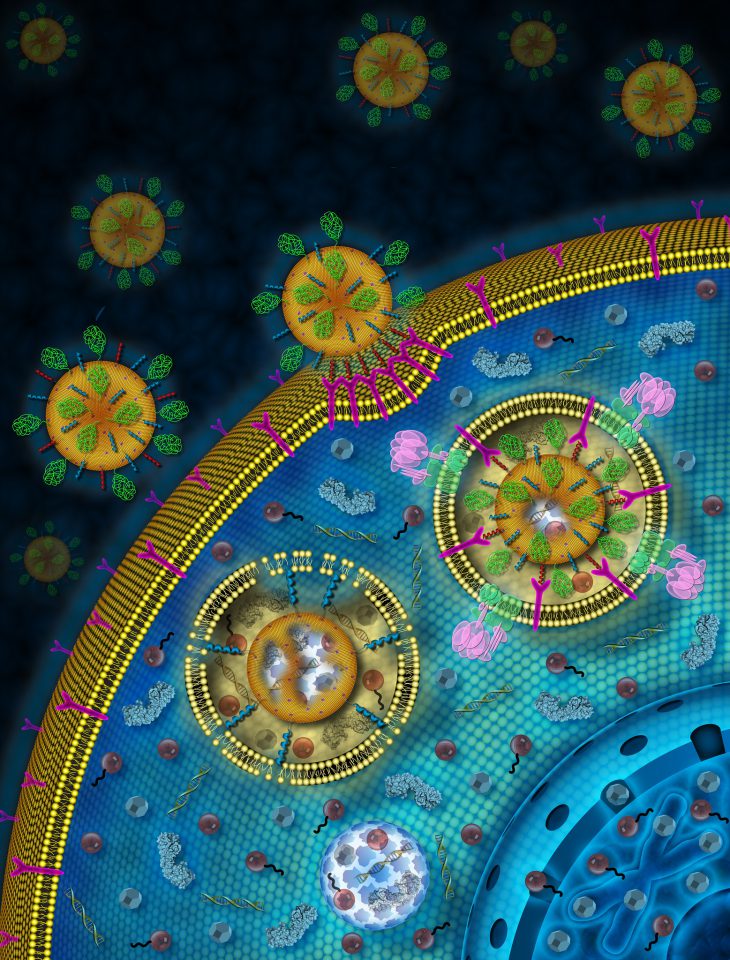The cells in our bones play a crucial role in maintaining our bone health. Diseases such as osteoporosis can damage the health of our bones. Osteoporosis is caused by the loss of bone material. Aging increases the risk of developing osteoporosis. Researchers have found that the worldwide increase in life expectancy has increased the number of new cases of osteoporosis.
The current treatment for osteoporosis uses a chemical that signals for bone formation called parathyroid hormone (PTH). However, over a prolonged period of receiving the treatment, PTH becomes less effective. Also, PTH primarily helps patients who suffer from osteoporosis due to a decrease in a hormone that increases bone formation known as estrogen, which is mostly found in women. Although osteoporosis can be treated by increasing bone formation, there are factors besides low estrogen levels that decrease the production of bone material. Researchers are working on ways to counteract bone loss.
In the study, the researchers use short molecules called small interfering RNA (siRNA) to target a protein called sclerostin, produced in bone cells. Sclerostin affects bone formation by stopping the production of cells that repair the damaged bone, called osteoblasts. Sclerostin is built according to the instructions from a gene called SOST. It starts as a DNA sequence, then it is transcribed into RNA to form sclerostin.
The researchers built their siRNA particles to specifically target the SOST gene. This SOST-siRNA “silences” the SOST gene in its RNA stage to stop the production of sclerostin. Although siRNAs are small, they do not go undetected by an enzyme that breaks down RNA, known as RNAase. In order to administer the treatment, the researchers used nanoparticles to transport siRNA and the chemical that preserves osteoblasts, called osteostatins, into the bloodstream without being destroyed by RNAses.

The nanoparticles are similar to a cargo ship, transporting the SOST-siRNA and osteostatins. The nanoparticles are coated with a chemical called polyethylenimine (PEI), which allows the nanoparticles to pass through RNAses, which is similar to ships using identification to go through customs. (Image by Daisy Cifuentes)
The nanoparticles are similar to a cargo ship, transporting the SOST-siRNA and osteostatins. The nanoparticles are coated with a chemical called polyethylenimine (PEI), which allows the nanoparticles to pass through RNAses, which is similar to ships using identification to go through customs.
The study for the new treatment was conducted on mice. The researchers were aware of the effect that estrogen has on bone formation. They tested healthy female mice and female mice that had their ovaries removed (OVX mice) to halt the production of estrogen. The researchers began by observing how the nanoparticles loaded with siRNA treatment affected which genes were turned on or off compared to the PTH treatment.
They set up two groups of mice, one that received the treatment for two weeks and another that received it for three weeks. From the two groups, they divided the mice into five groups, the healthy mice as a control group, the OVX mice, OVX mice that received empty nanoparticles, OVX mice that received standard PTH treatment, and OVX mice with SOST-siRNA encased in nanoparticles.
The researchers found that the mice that were treated with the SOST-siRNA for two weeks expressed 50% less of the SOST gene and the mice treated for three weeks expressed 60% less of the SOST gene. This means that the siRNA was effective since it silenced the SOST gene. These results also indicate that the siRNA nanoparticle treatment was more successful during a longer treatment period in comparison to PTH, which has shown to become less effective over time.
In addition, the researchers found that the SOST-siRNA causes the cell to make more of a “growth factor” molecule called VEGF that preserves cells that increase bone formation called osteoblasts. The increase in VEGF indicates that there is an increase in bone formation. The results also demonstrated that SOST-siRNA increases a protein called OPG. This protein reduces the number of the cells that break down bone material, called osteoclasts.

The cells that break down the bone material, osteoclasts are similar to workers removing part of the road. Sclerostin, produced by the SOST gene, works as a roadblock, preventing the cells that restore bone material, osteoblasts. siRNA removes the road block, sclerostin, allowing osteoblasts to continue repairing the bone and promoting bone formation. Image by Daisy Cifuentes
The cells that break down the bone material, osteoclasts are similar to workers removing part of the road. Sclerostin, produced by the SOST gene, works as a roadblock, preventing the cells that restore bone material, osteoblasts. siRNA removes the road block, sclerostin, allowing osteoblasts to continue repairing the bone and promoting bone formation.
SOST-siRNA was not only successful in silencing the SOST gene, it was also able to turn off other genes that cause bone loss and turn on genes that promote bone formation.
Finally, the researchers analyzed the bones of the mice that were treated with SOST-siRNA for three weeks. They observed that compared to the OVX mice, the mice treated with SOST-siRNA were able to recover their bone mineral density to a level close to that of healthy mice. By observing the images of the bones, the researchers found that those treated with SOST-siRNA had more formation of new bone material than the bones of mice treated with PTH.
The authors of this study concluded that using their innovative nanoparticle-based system to transport SOST-siRNA and osteostatin is more effective than the current treatments available. While the use of nanoparticle injections may seem quite similar to previous bone degrading treatments, the use of nanoparticles to carry and deliver drugs to the site of the problem can lead to the emergence of improved treatments for osteoporosis.


